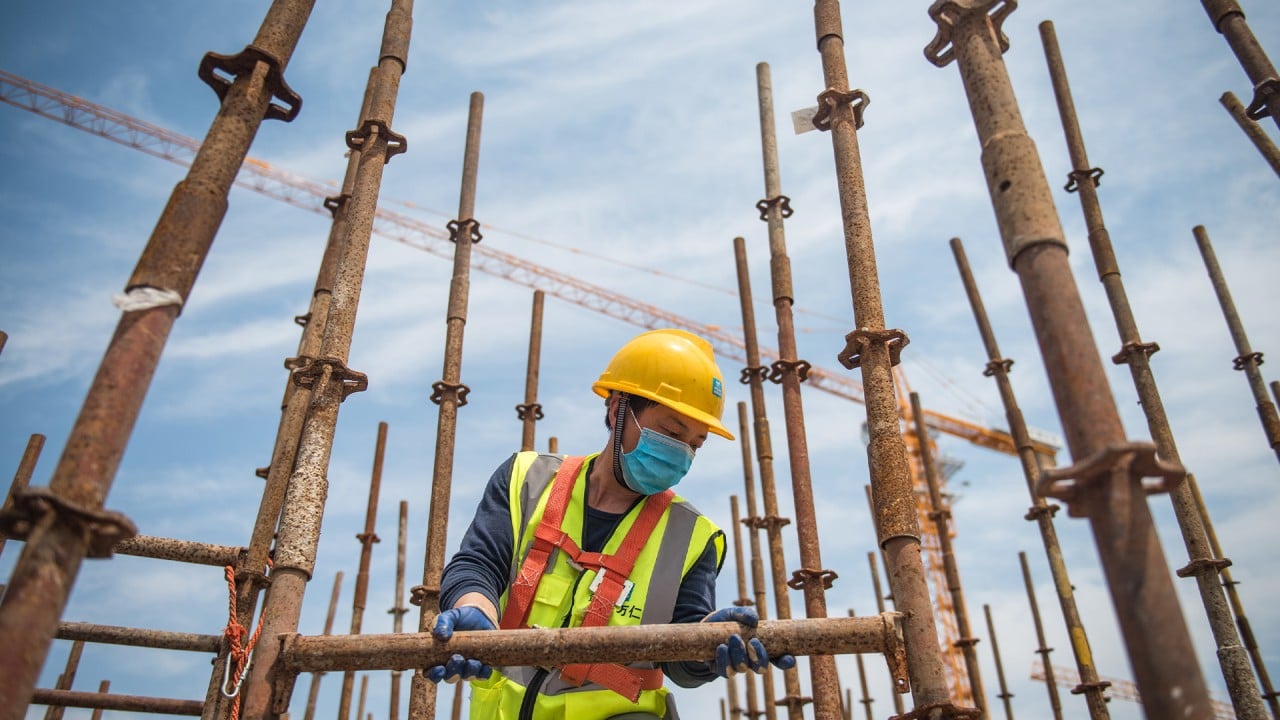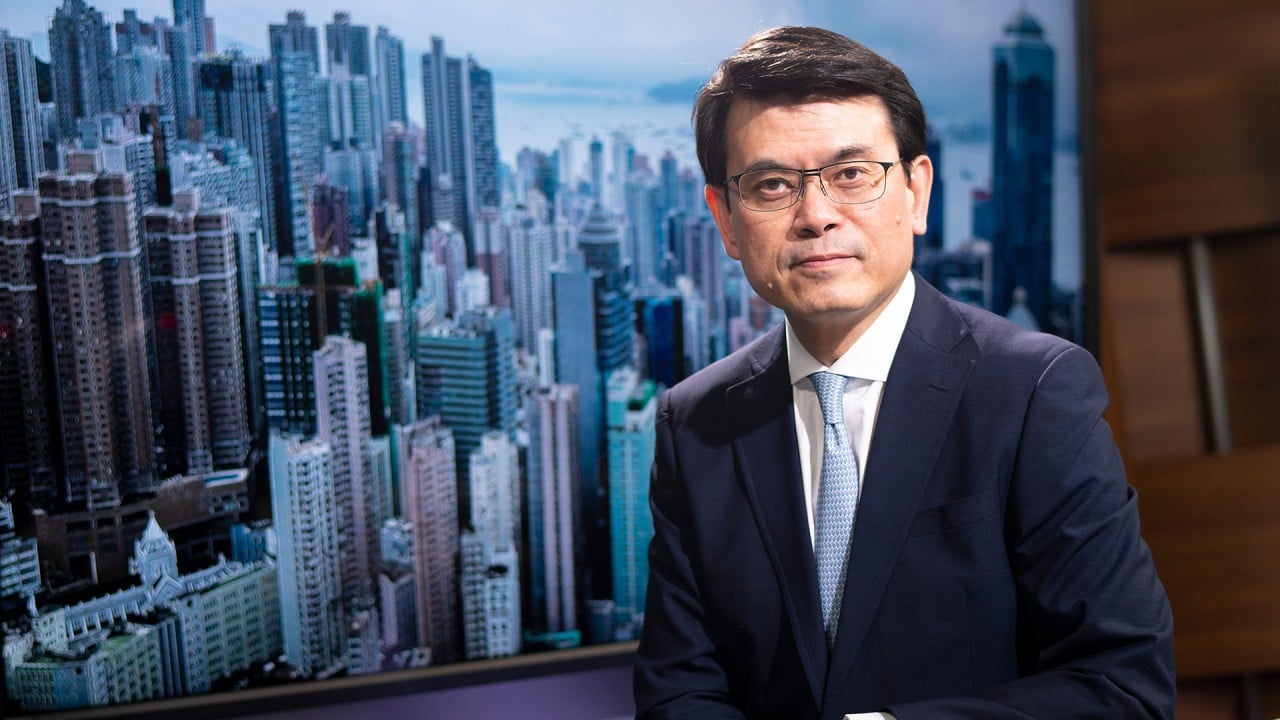
05:02
Coronavirus backlash further fraying China’s ties to global economy

This is the second story in a three-part series examining China’s plan to transform Hainan into an internationally influential ‘free-trade port’, as Beijing faces what it perceives to be an increasingly hostile international environment. You can read the first story in the series here.
Steve Li browses through racks of clothing at a comfortably air-conditioned shopping centre in tropical Hainan, stopping occasionally to check price tags for luxury brands ranging from Prada to Giorgio Armani.
Touted as “the world’s largest duty-free mall”, the Sanya Begonia Bay International Shopping Centre is at the forefront of a push by Beijing to turn the island into a global shopping destination that may tempt Chinese to splurge at home, rather than abroad.
While Li, who is from Shanghai, said Hainan was still no match for Japan or Europe, it was a good backup.
“I’ve already spent about 10,000 yuan (US$1,421) in this mall,” said Li, who was holidaying in Sanya because the coronavirus had made international travel nearly impossible.

05:02
Coronavirus backlash further fraying China’s ties to global economy
Li is one of China’s legion of international shoppers who have been behind a spectacular buying spree in shopping capitals from Paris to Seoul in recent years.
The No 1 purpose of overseas travel for China’s 150 million outbound travellers in 2019 was “shopping”, according to a survey by Trip.com and China UnionPay released last November.
Chinese tourists spent US$277 billion overseas in 2018, beating the United States and Germany combined, said the World Tourism Organisation, a United Nations agency.
For Beijing, however, the exodus of consumer power is both a sign of national strength and a source of concern. Tourism has been a big service trade deficit item on China’s balance of international payments.

12:13
‘No winner’ amid rising US-China tensions, says Hong Kong’s commerce chief Edward Yau
China reported a total service trade deficit of US$88.2 billion in the first five months of this year, in which US$73.3 billion, or 83.1 per cent of total, came from tourism, according to official data.
If Beijing wants to boost domestic consumer spending in the face of an increasingly uncertain post-coronavirus world, it will depend in large part on its success on keeping people like Li at home.
President Xi Jinping announced in April 2018 that Hainan, a popular holiday destination sometimes referred to as China’s Hawaii, would be made into the nation’s largest free-trade zone.
As part of a final plan unveiled last month, some imported goods will be made tariff free and the annual per person duty-free allowance will be lifted to 100,000 yuan from 30,000 yuan.
The Sanya Begonia Bay International Shopping Centre, which covers 120,000 square metres, is at the forefront of the strategy.
In late June, the mall was humming with shoppers and “professional buyers”, known as daigou. Wang Yue, who was picking up duty-free handbags and lipsticks for her clients in exchange for a fee, was enthusiastic about the new spending limits, which have also seen customs tariffs on single items scrapped.
“If there’s an annual duty-free quota of 100,000 yuan, I will definitely come here often, especially if it is more difficult to get visas and foreign currencies for overseas trips,” said Wang, who is in her 20s.
The duty-free policy gives Hainan a clear price advantage against Hong Kong.
A Burberry shoulder bag sells for 17,300 yuan at the Sanya mall, compared to HK$20,500 (18,690 yuan) in Hong Kong’s Times Square.
Shoppers can snap up an iPhone 11 Pro 512G for 10,210 yuan, which is 20 per cent below the standard selling price of Apple stores in the mainland, and cheaper than the HK$12,499 it sells for in Hong Kong.
Chen Xiaohua, deputy director of the Hainan Comprehensive Deepening Reform Committee, the agency coordinating the free-trade port, said the government's vision was for the island to be the first choice for Chinese consumers who wanted to buy imported goods.
In 2019, Hainan’s four duty-free malls attracted 3.2 million shoppers – mostly from the mainland – and sold 12.8 billion yuan (US$1.81 billion) of duty-free products, according to official data.
Joe Gao, a Beijing-based trader whose work frequently sees him travelling to Hainan and around Asia, said China’s plan to drive consumer spending cannot be put on a few duty-free malls.
“The key is to see whether it is possible to buy imported items as easily and cheaply at any Hainan store as in Hong Kong,” Gao said. “A small bar of Ferrero chocolate is priced at 10 yuan in a Shenzhen duty-free store, but it is priced only 8 Hong Kong dollars and available anywhere everywhere in Hong Kong.”
The third story in the series will look at plans to create a ‘special health care zone’ in Hainan to capitalise on the growing medical tourism market.